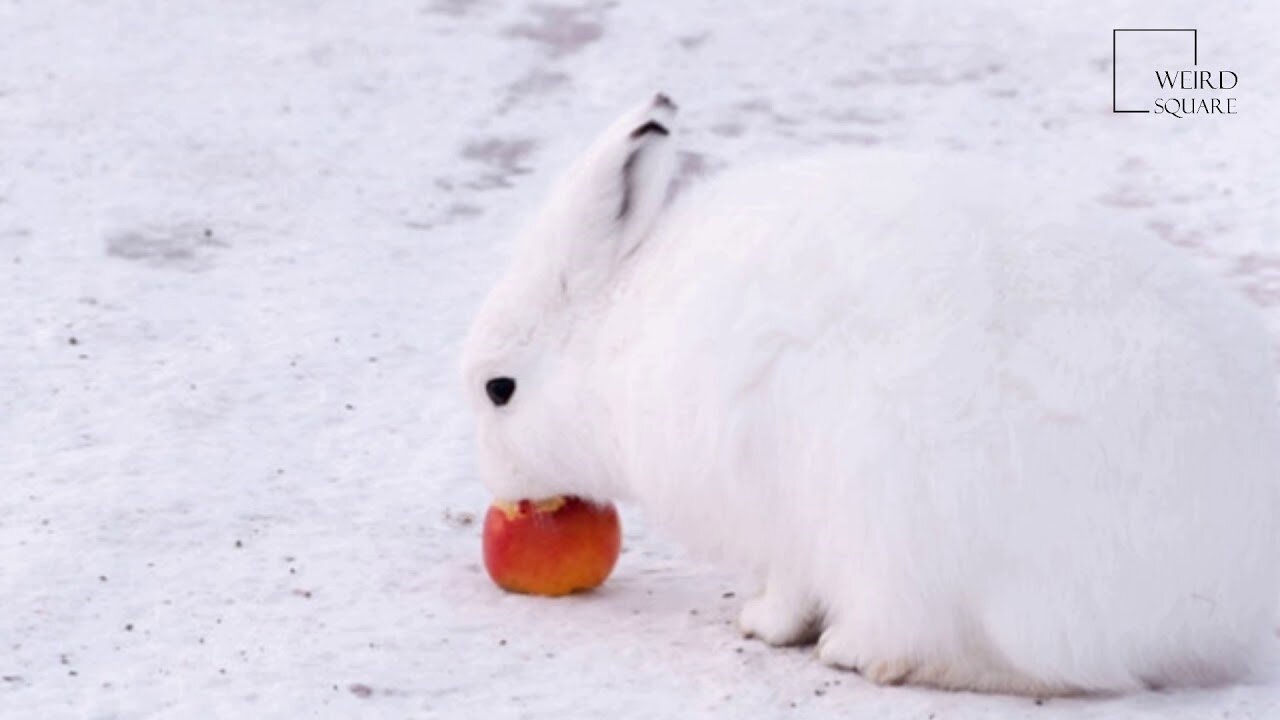Premium Only Content

Interesting facts about Arctic Hare by weird square
Description:
Adapted Fur: Their thick, white fur during winter provides excellent insulation against freezing temperatures, while their brownish-gray fur in summer helps with camouflage.
Large Feet: Sporting large hind feet, they move swiftly over snow and use them for digging burrows in the snow for shelter.
Size and Appearance: They are medium-sized hares, measuring about 19-26 inches (48-66 cm) in length and weighing around 3-12 pounds (1.4-5.4 kg).
Diet: Arctic Hares are primarily herbivores, feeding on woody plants, grasses, and willow twigs.
Behavioral Traits:
Social Behavior: They can be solitary or live in groups called "forms" consisting of several individuals.
Adaptation to Cold: Their small ears reduce heat loss, and they can withstand incredibly low temperatures.
Seasonal Changes: They experience a seasonal change in fur color to match the surroundings, a process called molting.
Adaptation and Survival:
Predator Avoidance: They rely on their incredible speed and agility to escape from predators like Arctic foxes, wolves, and birds of prey.
Breeding Adaptations: Arctic Hares reproduce in the spring and summer, giving birth to litters of up to eight leverets after a gestation period of about 50 days.
Conservation Status:
Stable Population: Arctic Hares are not currently threatened, and their population appears stable.
Ecosystem Importance: They play a crucial role in the Arctic food web as both predator and prey.
Tags:
#ArcticHare #ArcticAnimals #Adaptation #Wildlife #ArcticEcosystem #Nature #Conservation #Herbivores #ArcticSurvival #AnimalFacts
-
 2:35:31
2:35:31
vivafrei
11 hours agoEp. 268: Minnesota Assassinations; SCOTUS Rulings; No Kings; Padilla FAFO! WW3 & MORE! Viva & Barnes
59.8K111 -
 LIVE
LIVE
MyronGainesX
16 hours ago $14.36 earnedIsrael Tries To Drag America To War, Mass Protests In US, And More!
3,474 watching -
 LIVE
LIVE
SpartakusLIVE
5 hours agoBig DADDY Spart wishes YOU a Happy Father's Day || Duos w/ @sophiesnazz
795 watching -
 LIVE
LIVE
Due Dissidence
10 hours agoIsrael STRIKES IRAN, Iran HITS BACK, Marandi OWNS Media Hack, Is This THE END of MAGA?
2,021 watching -
 2:12:15
2:12:15
Nerdrotic
3 hours ago $3.71 earnedChris Cottrell Interpreting the Geomorphology of Carolina Bays | Forbidden Frontier #105
16.5K2 -
 LIVE
LIVE
Spartan
1 hour agoPro Halo Player | Halo Infinite Ranked Arena into SWTOR and/or Gears Beta
28 watching -
 LIVE
LIVE
This is the Ray Gaming
44 minutes agoPushing for Rumble Creator Program
31 watching -
 LIVE
LIVE
Damysus Gaming
22 minutes agoDune: Awakening - Grinding for that Ornithopter - Guild Work! Drown in Some Spice!
6 watching -
 LIVE
LIVE
EricJohnPizzaArtist
4 days agoAwesome Sauce PIZZA ART LIVE Ep. #51: Music Night featuring Sophmore John!
128 watching -
 LIVE
LIVE
sophiesnazz
5 hours ago $2.86 earnedWE VIBING! !socials
173 watching